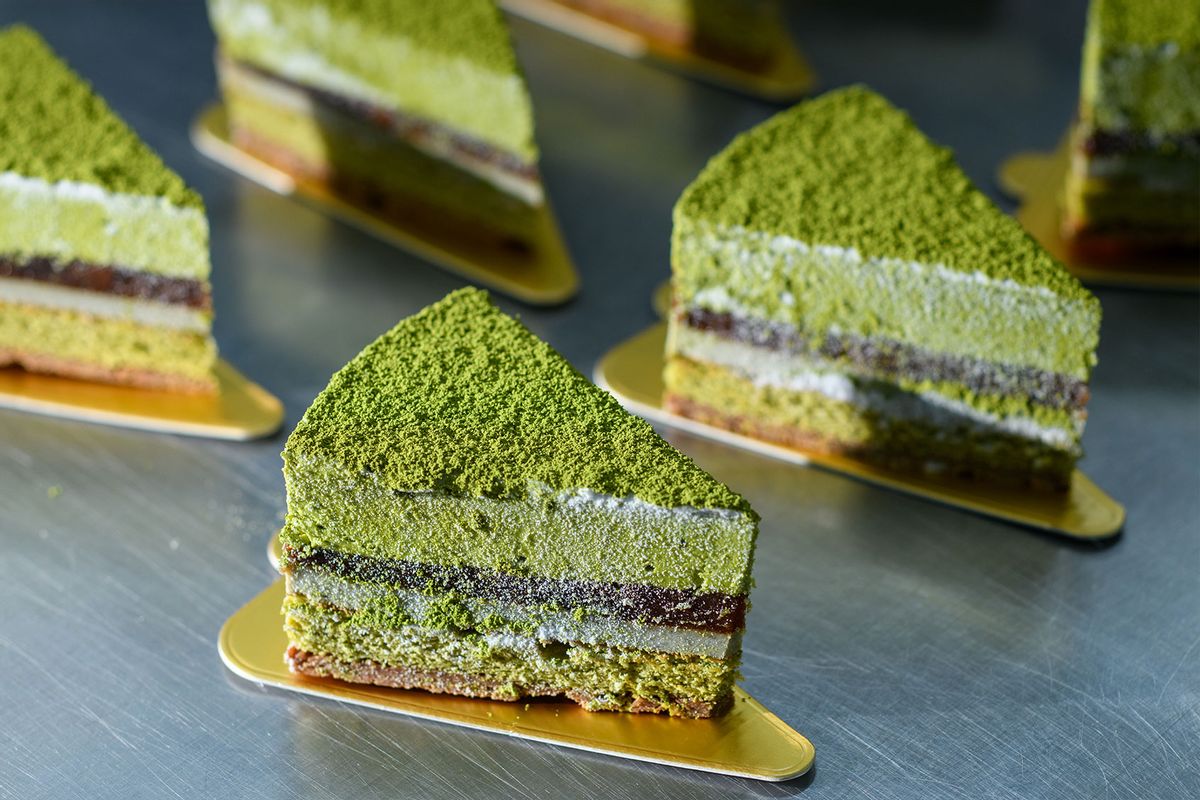After living in Southeast Asia for nearly seven years, I go by the golden rule: If you see pandan on a menu, order it.
A centuries-old culinary staple in Asia, pandan is a tropical shrub whose leaves are boiled and used for flavoring in drinks, desserts, rice and more. And although it has the same light green hue as matcha, the taste is wildly different.
“Pandan is cake flavor in plant form!” says Kelly Jacques, co-owner and chef at Ayu Bakehouse in New Orleans. “The sweet, vanilla aroma draws you in and feels familiar, while the grassy notes add an unexpected layer of complexity that makes you go for a second bite to find out more.”
Often referred to as Asia’s answer to vanilla, pandan is easy to incorporate into various dishes, especially sweet ones. At Ayu Bakehouse, Jacques steeps whole pandan leaves in coconut milk, eggs and sugar for hours until it morphs into a thick, creamy custard. “We use this as a filling for our kaya buns, a laminated pastry that has been known to convert even alleged coconut haters,” she says.
While its bright green color means it would fit in perfectly at a kid’s birthday party, its flavor is subtle, earthy, comforting and addictive.
“Pandan is such a unique and complex flavor. You can’t quite put your finger on it at first, and that makes it intriguing. It smells like a mix of different things —vanilla, rice, fresh grass—but it’s unlike anything else you’ve tasted,” says Chef Verlord Laguatan of Pandan in Chicago. “For people who are unfamiliar with it, it sparks curiosity. It’s one of those ingredients that feels both familiar and mysterious, and that’s what keeps people coming back for more.”
We need your help to stay independent
Verlord likes to equate the plant to cinnamon sticks. “You steep it in liquids or sauces, letting it infuse and release its essence.” At this hotel cocktail lounge, they add it to their namesake drink, Pandan. Their version of a margarita is made with homemade pandan syrup paired with Don Julio and citrus.
Although the flavor can be found all over Southeast Asia, particularly in Malaysia and Singapore, it’s popping up more and more at bakeries, restaurants and bars across the US. At the new restaurant, Kancil, in New York City, chef Simpson Wong uses pandan in both desserts and savory dishes. “It’s quite a distinctively Asian flavor and a popular alternative to herbs like rosemary and cilantro to grill, fry and stew meat,” says Wong.
At Kancil, pandan is infused in his rendang sauce and cooked into the rice used for classic Malaysian dishes like pulut panggang and nasi ulum. He even makes a pandan fried chicken by tying a whole leaf around marinated chicken thighs. “It’s super versatile and reminds me of home and my mother’s kitchen,” says Wong.
A few neighborhoods down, at New York City’s first-ever tiramisu cafe, Cafe 2by2, they make a pandan coconut tiramisu cake. In Duluth, Georgia, Snackboxe Bistro’s pandan brownies are so popular they made more batches for their mini-mart. At Village Creamery in Niles, Illinois, they scoop a Buko Pandan flavor sprinkled with shredded coconut. And at Maprang Bakery in Sommerville, Massachusetts, the coconut pandan cake is one of its most revered items.
Chef Laguatan is happy to see the flavor gaining traction across the US, noting it’s become more accessible, especially in the freezer aisles of most Asian grocery stories. “What’s exciting is that it’s not just limited to traditional dishes anymore; it’s being experimented with in all sorts of ways,” he says.
“Maybe it's just because we've been buying it by the armful for the last three years, but I definitely have been seeing a lot of pandan,” says Jacques. “I think its allure is in its approachable vanilla flavor and electric green color, like vanilla extract on steroids.”
As it continues to grow in popularity across the United States, perhaps dethroning the matcha trend, do as I do and when you see pandan on offer — try it.
Read more
about sweet treats



Shares